As addressed in “Smith & Wesson’s X frame 460 S&W Magnum Part I – Ronald Reagan and the S&W X Frame Magnums”, setting aside a sensationalizing gun press, the X Frame S&W 460s are just accessory accommodating, hunting handguns with appropriate length barrels and a useful capacity. If you are a medium to big game handgun hunter, S&W’s approach is easy to understand and the features and benefits are obvious. If you are solely a whitetail rifle hunter, or your exposure to firearms is restricted to a concealed carry Glock, you may be hard pressed to find a fit within your applications, but that may not matter.
Shooting big guns and big cartridges is fun. They are loud, they kick, they belch muzzle blast and breath fire. They bring out the kid in all of us. They can also be extremely accurate, extremely reliable and provide new challenges at the shooting bench, the reloading bench and in the field while hunting.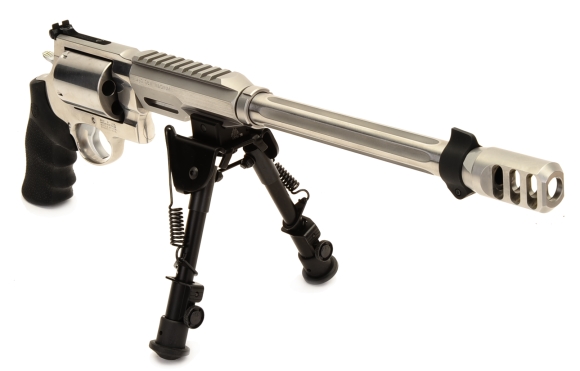
The Model 460XVR 14″ can be used with 45 Colt, 454 Casull or 460 S&W Magnum ammunition. The objective in Part II was to construct handloads that would give a 460 S&W Magnum shooter/handloader a broad range of power, without resorting to stocking three types of ammunition and/or handloading components.As an example, loading for the Colt, Casull or S&W Magnum would require a stock of large pistol, small rifle and large rifle primers and three different types of brass.
Why not shoot 45 Colt or 454 Casull ammo when very heavy hitting isn’t on the agenda? As a handloader, there is no real gain as 460 S&W brass is long lived and using 460 S&W Magnum brass protects 0.210″ of finely finished chamber walls from gunk and erosion, the result of shooting shorter cartridges. Using 460 S&W brass also builds handloading experience with the cartridge and a better understanding of its personality. No, I don’t shoot 38 Special ammunition in my 357 Mag revolvers either.
The bullet line up...
| Bullet Brand | Type | Bullet Weight Grains |
Bullet Length “ |
Bullet Seating Depth” |
Cartridge Overall Length” |
Load Level |
| Hornady | FTX | 200 | 0.830 | 0.345 | 2.285 | Heavy |
| Nosler | JHP | 250 | 0.680 | 0.355 | 2.115 | Light |
| Cast Performance | SWC | 255 | 0.693 | 0.375 | 2.140 | Light/Moderate |
| Speer Hot-Cor | JHP | 260 | 0.690 | 0.385 | 2.100 | Moderate |
| Hornady Mag | JHP | 300 | 0.810 | 0.450 | 2.165 | Heavy |
| Cast Performance | FP | 300 | 0.796 | 0.495 | 2.105 | Heavy |
| Cast Performance | WNFP | 360 | 0.933 | 0.555 | 2.200 | Heavy |
The 460 S&W Magnum is an easy cartridge to reload. In this instance, inexpensive Lee Precision dies were used in conjunction with a Lee factory crimp die. Load levels range from approximately 38,000 psi to 58,000 psi. I have no doubt that any of the loads appearing on the table are suitable for deer and hogs, perhaps with the exception of the low velocity Trail Boss load. The light load was used to let people who do not like dragon fire get cursory experience shooting the Smith & Wesson’s Performance Center Model 460XVR 14″
The S&W did not end up with a heavily leaded barrel. The cast bullets indicated are hard cast and were held to less than barrel scorching velocity. The Nosler bullet velocity was kept tucked in as it is made for moderate pressure 45 Colt loads and is not listed for 454 Casull or 460 S&W applications. The 260 grain Speer is listed by Speer for use with the 45 Colt, 454 Casull and the 460 S&W Magnum, but the bullet in Speer collateral material is listed for target shooting applications only. Tracing that bullet’s lineage back to Speer 10, it had been consistently listed in manuals up through Speer 13 for high pressure 45 Colt loads, the 45 Winchester Magnum, 454 Casull, and 460 S&W and “light deer hunting”.
In this case, I would frame the 260 Grain Speer as a good weight and velocity for range practice with the 460 S&W. A less leading than cast bullet copper jacketed alternative, too lightly constructed for hunting with the 460 S&W unless muzzle velocity was reduced below 1,300 fps. Launched at 1979 fps MV as reflected in the following table data, the bullet is still cruising near 1,300 fps at 200 yards.
Powder selection began with lots of different types with the specific objective of utilizing some of the newer additions like CFE BLK. Unfortunately, the results weren’t there and I didn’t want to choose powders just because they were newer. CFE BLK did not deliver anticipated velocity, nor did Alliant Power Pro 300-MP at recommended charge levels and, subsequently, eliminated. H110, Win 296 and IMR 4227 performed the best, with IMR 4227 the most consistent and predictable.
Red dot and open sights are easy and certainly adequate for 100 yard deer hunting. In fact, they are good out to 500 yards for people who do their shooting on the Internet and the sorely missed Elmer Keith. To be fair to the S&W, a scope was mounted; a well used 2-6x32mm Japanese manufactured Bushnell on steel Warne low rings. No, I’m not sure why I inserted a semicolon back there. The sentence seemed to amble on with a comma, but the second part appeared alone and defenseless when I tried to separate it with a period. So, semicolon…
| Cartridge – 460 S&W 65KPSI MAP Max |
|
| Firearm | S&W 460XVR |
| Barrel Length | 14.00″ |
| Min – Max Case Length | 1.800″ +0.000″/-0.020″ |
| Min – Max COL | 1.900″ – 2.290″ |
| Primer | Remington 9 1/2 (LR) |
| Bullet Diameter | 0.4525″ +0.000″/-0.0030″ |
| Reloading Dies | Lee + Lee Crimp |
| Bullet Type | Bullet Weight Grains |
Net H2O Grains Capacity |
COL” | Powder Type | Powder Charge Grains |
Muzzle Velocity fps |
Muzzle Energy ft/lbs |
100 YD 3 Shot Group” |
| Hornady FTX | 200 | 46.7 | 2.285 | Alliant 2400 | 43.0 | 2246 | 2241 | 2.5 |
| Hornady FTX | 200 | 46.7 | 2.285 | H110 | 52.0 | 2382 | 2520 | 2.8 |
| Nosler JHP | 250 | 45.6 | 2.115 | AA No.9 | 30.0 | 1617 | 1452 | 3.1 |
| Nosler JHP | 250 | 45.6 | 2.115 | Alliant 2400 | 31.0 | 1683 | 1573 | 2.7 |
| Cast Perf SWC | 255 | 46.1 | 2.140 | Trail Boss | 14.0 | 1008 | 575 | 2.6 |
| Cast Perf SWC | 255 | 46.1 | 2.140 | IMR 4227 | 43.0 | 1877 | 1995 | 2.8 |
| Speer JHP | 260 | 44.6 | 2.100 | H110 | 43.0 | 1851 | 1979 | 3.2 |
| Speer JHP | 260 | 44.6 | 2.100 | IMR 4227 |
36.0 | 1834 | 1942 | 2.9 |
| Hornady XP/Mag | 300 | 42.0 | 2.165 | H110 | 42.0 | 1904 | 2416 | 1.8 |
| Hornady XP/Mag | 300 | 42.0 | 2.165 | Lil’ Gun |
44.0 | 1979 | 2610 | 2.3 |
| Cast Perf FP | 300 | 40.5 | 2.105 | IMR 4227 | 41.0 | 1922 | 2461 | 2.7 |
| Cast Perf FP | 300 | 40.5 | 2.105 | Win296 | 42.0 | 1989 | 2636 | 2.5 |
| Cast Perf FP | 360 | 38.8 | 2.200 | H110 | 37.5 | 1843 | 2716 | 2.2 |
| Cast Perf FP | 360 | 38.8 | 2.200 | Win 296 | 38.0 | 1838 | 2701 | 3.0 |
Now that was excitin’…
The S&W Performance Center’s Model 460XVR 14″, with varying loads, displayed a variety of personalites. The Hornady 200 grain FTX loads were interesting. Both published loads were OK, however, muzzle flash through the very effective brake lit up the shooting bench like a Hollywood special effect. Honestly, recoil was not a big deal, as the result of hefty weight of the revolver and the brake doing its job.
The Nosler loads were pop gun level even though the 250 grain velocity would suggest something different. The 255 cast bullet loads with Trail Boss were fun. Both may wife and I shot for some inter-family target competition. At 25 yards, the big revolver would cloverleaf with a red dot sight in place. Report was modest and the powdery muzzle blast was attributed to cast bullet lube and cartridge eject comprised of burnt powder and lead.
The 260 grain Speer JHP was moderate in recoil and not as accurate as I hoped. The velocity achieved is probably higher than useful for this bullet as it is only recommended for target practice.
The 300 grain Hornady XP/Mag performed well and was excellent at 25 yards, which suggests some of this larger group size 100 yard performance is on me and still getting comfortable with the Performance Center Model 460XVR. It is an excellent hunting bullet, with very reliable performance with the 454 Casull and even some high performance 45 Colt loads in 5 shot revolvers.
The 300 and 360 grain cast bullet loads were the least eyebrow raising to shoot. The bullets are heavy, but velocity is comparatively lower, so they did not exhibit severe recoil or muzzle flash. If I were handgun hunting, I would go with heavier bullets rather than the light. In my part of the country, shots are close in, so I wouldn’t need to be concerned with bringing 200 yard capability with me.
Joe, please stop…
Regardless which X Frame was shot, they seemed to be loafing along with top loads and perfectly comfortable with lighter loads. After a number of range sessions, sighting systems stayed put, nothing broke or worked loose. With experience, I found both/either to be not overly large, not so difficult to shoot and a rational choice for handgun hunting or wilderness defense. My personal preference would be the 7.5″ version, only because it would get a lot more use and provide a lot more utility. I can’t think of any North American game animal either Model 460XVR couldn’t drop. Fun revolvers and lots of opportunity for handgun hunters, competitive shooters and handloaders.


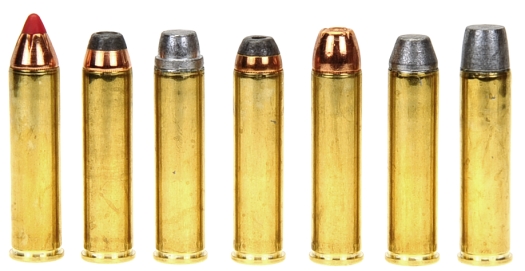
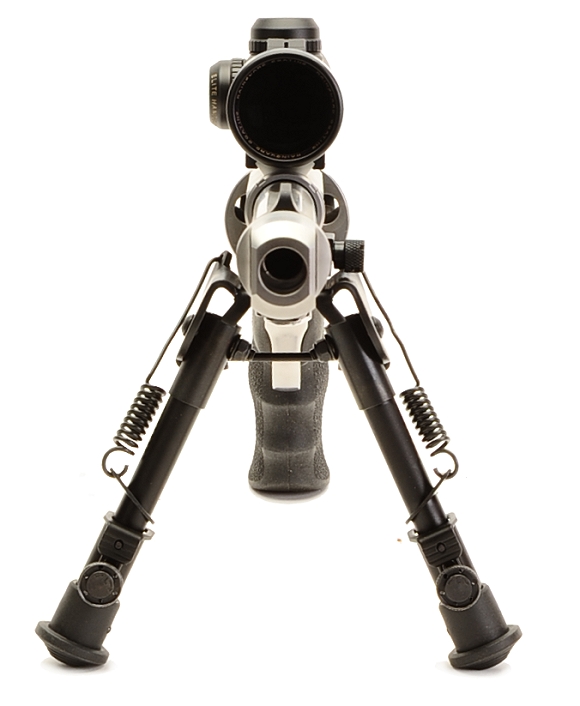
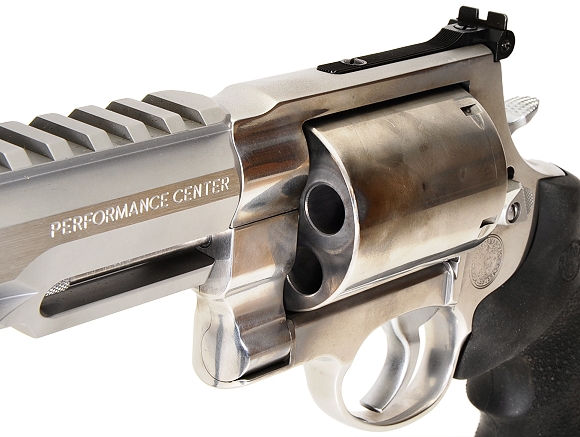
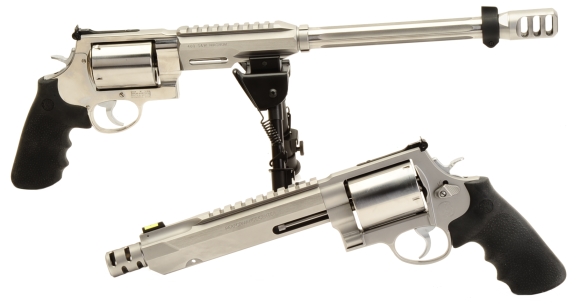
Email Notification